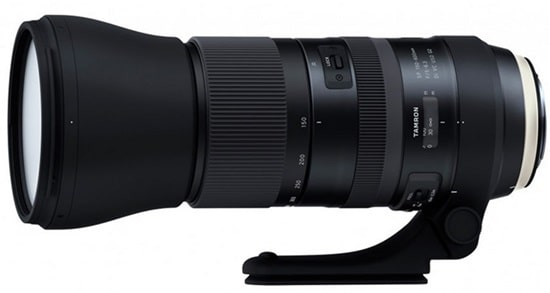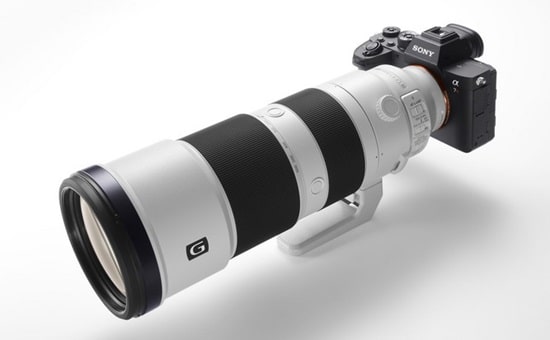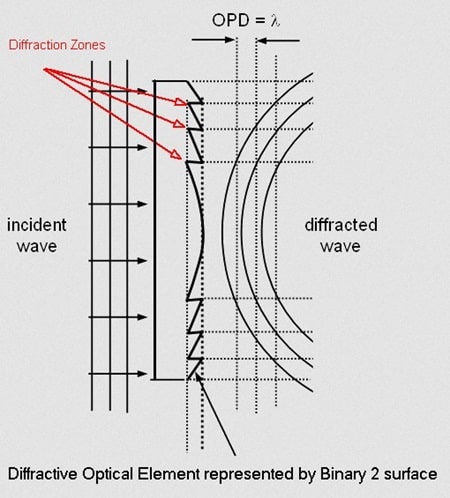So, are you trying the exciting world of wildlife photography huh? One of the most important tools you’ll need for this adventure is a good lens, and trust me, choosing the right one can make all the difference.
Whether you’re out in the wild trying to catch a majestic bird in flight or sneaking up on a dragonfly perched on a leaf, the right lens will make sure your shot is crisp, clear, and just wow.
But, wait! Before you rush off to buy a lens, there are a few things you need to consider. Lenses aren’t just about zooming in on that faraway lion or getting up close to a butterfly.
There’s a lot more to it than that, and I’m here to help you navigate through all those confusing numbers and specs. So, grab a cup of coffee, and let’s chat about what you should look for when buying lenses for wildlife photography. Ready? Let’s go!
What You Need to Consider When Buying Lenses for Wildlife Photography
Alright, let’s get straight to it. There are a few important things to think about when picking out the perfect wildlife photography lens. You can’t just grab any old zoom and expect it to work like magic.
Here are some of the main factors you’ll want to keep in mind..
1. Focal Length

The focal length is one of the first things you’ll notice when shopping for lenses. It’s basically how far you can zoom in on your subject. For wildlife, you’ll need something that lets you capture animals from a distance without scaring them off.
Most wildlife photographers opt for lenses that range between 300mm to 600mm. That range allows you to capture distant animals like birds or more approachable wildlife like deer without getting too close.
If you’re a bird photographer, you’ll probably lean more towards the 500mm to 600mm range. Smaller, more skittish animals? Yup, a longer focal length is your best friend.
But if you’re focusing on larger animals like elephants or giraffes, 300mm to 400mm might be enough.
2. Aperture
The aperture controls how much light gets into your lens. When you’re shooting at dawn or dusk (which is prime time for wildlife photography), having a wide aperture like f/2.8 or f/4 can be a lifesaver.
A wider aperture allows more light into the camera, which is super helpful in low-light situations.
However, lenses with wider apertures tend to be more expensive and heavier. If you’re just starting out, f/5.6 could work just fine for you.
Plus, you can always adjust settings like ISO and shutter speed to make the most of the available light. Just know that a wider aperture gives you more flexibility in tricky lighting conditions.
3. Autofocus Speed
You know those moments when an animal makes a sudden move, and you have just a split second to get the shot? That’s where fast autofocus comes into play.
Wildlife doesn’t wait for you to focus, so a lens with a quick and reliable autofocus system is essential. Some lenses use ultrasonic or stepping motors to achieve faster focusing speeds, and they can really make a difference when you’re out in the field.
If you’re into birds in flight or animals on the run, this is something you definitely don’t want to overlook. Trust me, there’s nothing more frustrating than a blurry shot just because your lens couldn’t keep up!
4. Build Quality and Durability
Let’s be real here, wildlife photography is not the kind of hobby you do in your backyard. You’ll probably be trekking through forests, climbing hills, or sitting in a cold, damp spot waiting for the perfect shot.
So, having a lens that can withstand a little rough treatment is important.
Look for lenses that are built to last, preferably with weather sealing. You don’t want dust, dirt, or water getting inside your gear.
A durable lens will save you a lot of headaches in the long run, and let’s face it, camera gear is an investment—you want it to last!
5. Minimum Focus Distance
Okay, this is one of those technical terms that might sound boring, but it’s actually really important, especially if you’re into macro photography (like shooting small insects or flowers). So, what’s the minimum focus distance?
It’s basically the closest distance your lens can be to the subject and still get a sharp image.
Let me give you an example. My Nikon 500mm f/5.6 has a minimum focus distance of 3 meters (or about 9.8 feet). So, if a bird gets any closer than that, my lens won’t be able to focus on it, no matter how hard I try. I’d have to physically move back to get the shot.
Interestingly, some budget zoom lenses actually have better minimum focusing distances than high-end ones. For instance, Nikon’s 300mm f/4 PF is famous for having a great minimum focus distance, which makes it a favorite among photographers who like to shoot smaller subjects, like dragonflies and butterflies.
So, if you’re into shooting tiny creatures up close, keep an eye on that spec.
6. Weight
Here’s the deal, guys—weight matters! You might not think about it much when you’re buying your first lens, but after hours of carrying around heavy gear, your arms are going to feel it. Trust me on this one.
Different people have different levels of tolerance when it comes to weight, but here’s a simple breakdown:
- Under 2500g (5.5 lbs):
Super comfortable, easy to carry around all day. - 2500g to 3200g (5.5 to 7 lbs):
Doable, but you’ll feel like you’ve had a workout by the end of the day. - Over 3200g (7 lbs+):
Okay, now you’re in the ‘big glass’ category, and you’ll probably need a tripod or monopod unless you’re a gym rat.
But it’s not just about the numbers, how the weight is distributed matters too. A lens that balances the weight toward the camera body will be easier to handhold for longer periods than one where the weight is all out at the end of the lens.
So, before you buy that monster of a lens, think about how much you’re willing to carry and for how long.
Long Zoom Lens in the Budget
Let us now discuss something a little more reasonably priced—long zoom lenses. The sweet spot for most photographers will be an inexpensive zoom lens covering 500mm or more.
Usually spanning 100mm to 400mm or 600mm, these lenses offer great flexibility.

Popular cheap zooms with lots of bang for your money are the Tamron 150-600mm G2 and the Sigma 150-600mm Contemporary. From small frogs to far-off deer, these lenses are quite light-weight, hand-held, and ideal for capturing a range of life.
The broad focus range of these zoom lenses is among their better features. You can capture butterflies one minute and then enlarge on a far-off eagle the next without being locked into one focal length.
They also have reasonable minimum focus distances, which allows you to still get close-up views of smaller animals like lizards or insects without changing lenses.
There are, nevertheless, certain drawbacks. Particularly near the long end of the zoom, the image quality may not be as sharp as that of a prime lens. And since their apertures are smaller—like f/6.3 or f/7.1—you will want either better illumination or higher ISO settings to prevent noise in your pictures.
Having said that, for the price modern budget zoos provide tremendous value and are getting better and better. These lenses are really worth thinking about whether you’re just starting off or want to keep under budget.
The Higher-End Zoom
Alright guys, let’s enter the fascinating realm of high-end zoom lenses! These bad lads are for those of you seeking a bit more pizzazz in your wildlife photographs.
Investing in a high-end zoom might be just what you need if you’re someone who’s serious about getting that ideal view of a lion on a far-off hill or a bird swooping far off in the heavens.
What then distinguishes these high-end zooms from your ordinary zoom lenses? They are first quite versatile.
Usually covering a wide spectrum of focal lengths, such as 100–400mm or perhaps 200–600mm, a high-end zoom will for you, this means you may capture a range of animals—from a close-up of a sleeping lion to a far-off eagle in the heavens—all without changing cameras. Think about that! Less lens swaps and more action pictures.

These lenses are meant to provide you the best of both worlds: enough versatility to manage animals that are considerably closer, yet a reasonable range for those far-off things. Take the Sony 200-600mm f/5.6-6.3 or the Canon RF 100-500mm f/4.5-7.1—these lenses are all about giving you the freedom to compose your shot exactly how you want it.
High-end zooms’ sophisticated picture stabilization is yet another great feature. Even the smallest camera shake will transform a great photo into a blurry mess when you are zooming in at 400mm or 600mm.
Even at lengthy focal lengths, these high-end zoom lenses come loaded with image stabilization technologies that help keep your images stable. Thus, even if you’re shooting handheld, you may still capture clean, detailed views without always depending on a tripod.
Naturally, though, there is always a drawback. High-end zoom lenses usually lean toward the heavier side. Some of them weigh a few kg, and dragging that about all day can be quite the exercise.
Given these lenses are not inexpensive, you might also have to allocate more funds. Investing in a high-end zoom can be a game-changer, though, if you’re serious about wildlife photography and you want a lens that can manage varying distances and circumstances.
The Wide Aperture Prime Lens
Let us now specifically address the wide aperture prime lenses. These lenses are where it’s at if you’re looking for the very best quality and you’re not hesitant to indulge a bit.
Prime lenses have a fixed focal length, hence unlike zoom lenses you cannot zoom in or out. But let that scare you off not turn away! Their low-light capabilities and pure image quality more than offset any lack of adaptability.
Regarding wide aperture primes, we typically refer to lenses ranging from 400mm f/2.8 to 600mm f/4. Particularly useful in low-light situations like early mornings or late afternoons when animals are most active, these lenses feature a large maximum aperture, therefore allowing a ton of light to get through.
The wide aperture also produces a very shallow depth of vision, hence your subject will be razor sharp while the backdrop melts into a gorgeous blur. This is ideal for bringing your subject—a bird on a branch or a tiger in the jungle—to life.
The drawback is what I mentioned above. Both pricey and heavy are these lenses. We are discussing the kind of price tag that would allow you to acquire a little car.
On the other hand, these lenses will produce absolutely amazing image quality if you’re dedicated to catching the greatest wildlife shots and you’re not mind carrying a little more weight.
Photographers that concentrate on extremely specific topics, such as big animals or birds in low light, sometimes find their way toward these wide aperture primes. Their lightning-fast autofocus helps them to handle fast-moving subjects quite effectively; their produced bokeh is creamy and smooth.
Narrower Aperture Primes: Canon’s DO and Nikon’s PF Lenses

Now let’s veer somewhat and discuss smaller aperture primes, particularly the specialist lenses like Canon’s DO (Diffractive Optics) and Nikon’s PF (Phase Fresnel). If you find yourself wondering, “What do all these technical words mean?” I have you, so relax!
These lenses are made to provide you great reach free from the size and weight of a conventional prime lens. Though they compensate for it in a few really creative ways, their apertures—like f/4 or f/5.6—often are smaller.
Special optical technology used in Canon’s DO lenses and Nikon’s PF lenses makes the lenses far more lightweight and compact without compromising image quality. For you, what does that entail?.
Imagine, then, lugging about a 500mm f/5.6 lens that weights far less than a conventional 500mm f/4. It’s like possessing a super telephoto lens devoid of the back-breaking weight. For photographers who want to go light and fast—whether they are hiking across the bush or driving hours to reach the ideal location—these lenses are a dream come true.
Though their apertures are not as wide as those of their larger counterparts, these lenses nonetheless create shockingly sharp images. They are ideal for photographing in daylight or somewhat illuminated environments even if they might not manage low-light conditions quite as well as wide aperture primaries.
They also usually cost less, which makes them a wonderful choice for photographers looking for top-notch equipment without busting their whole budget.
For example, wildlife photographers love Nikon’s 500mm f/5.6 PF because it’s sharp, lightweight, and less expensive than some of the bigger prime lenses. It’s ideal for bird photography or any scenario in which you want a long reach without lugging about a big lens.
Likewise, Canon’s 400mm f/4 DO IS II is a great pick for everyone who values mobility as much as image quality since it is portable and easy to use.
Conclusion
Choosing the best lens for wildlife photography depends on your specific needs and budget. Whether you opt for a budget zoom or a high-end prime, consider factors like weight, autofocus speed, minimum focus distance, and aperture size.
With the right lens, you can capture stunning images of wildlife that rival those of professional photographers.

